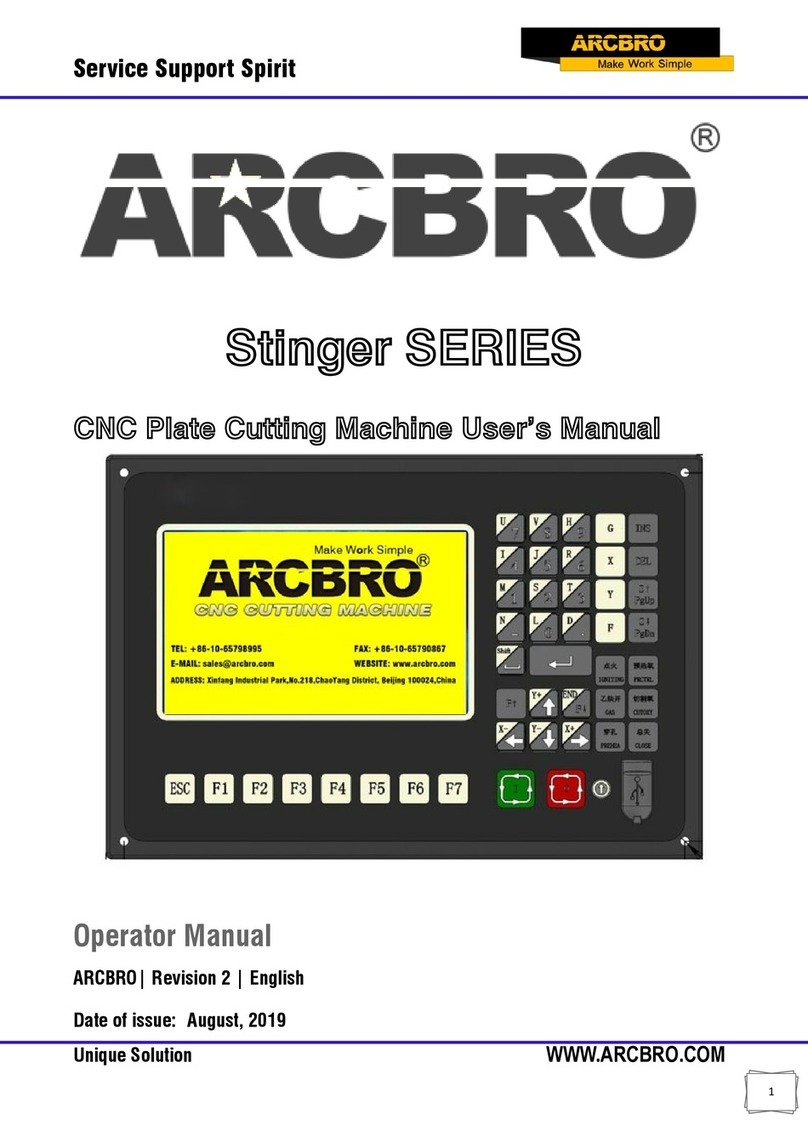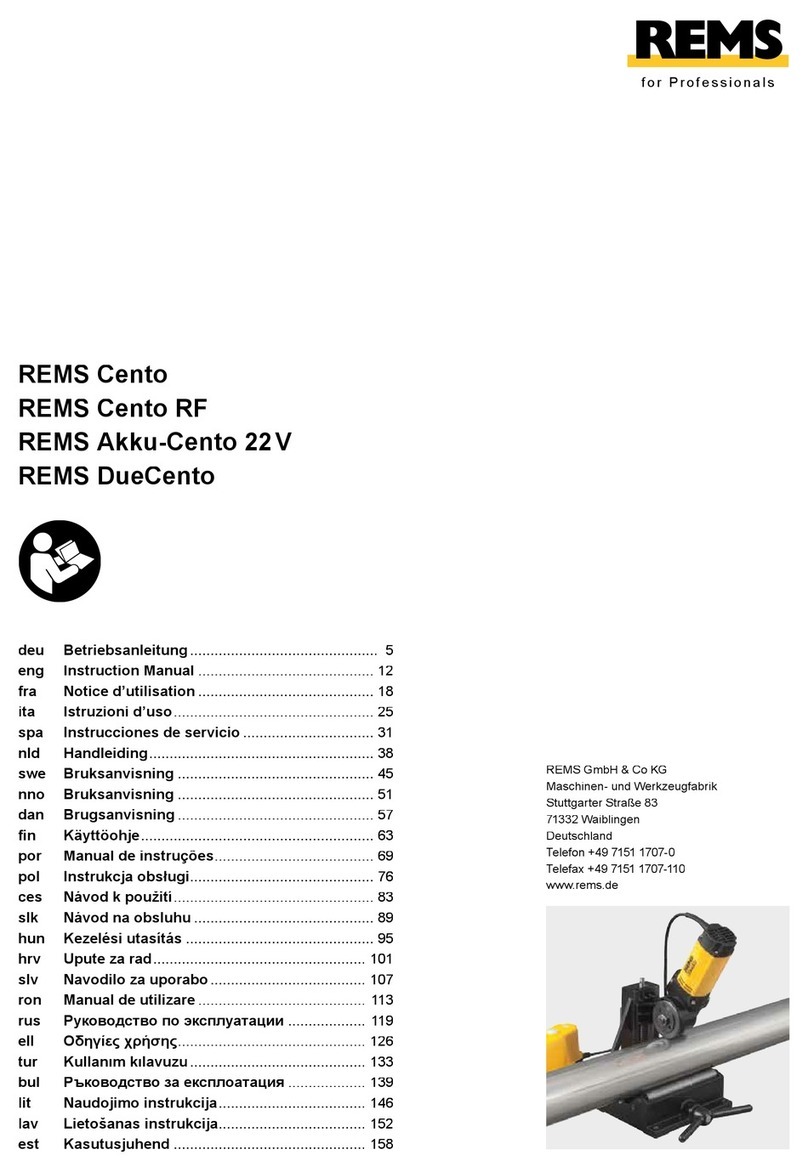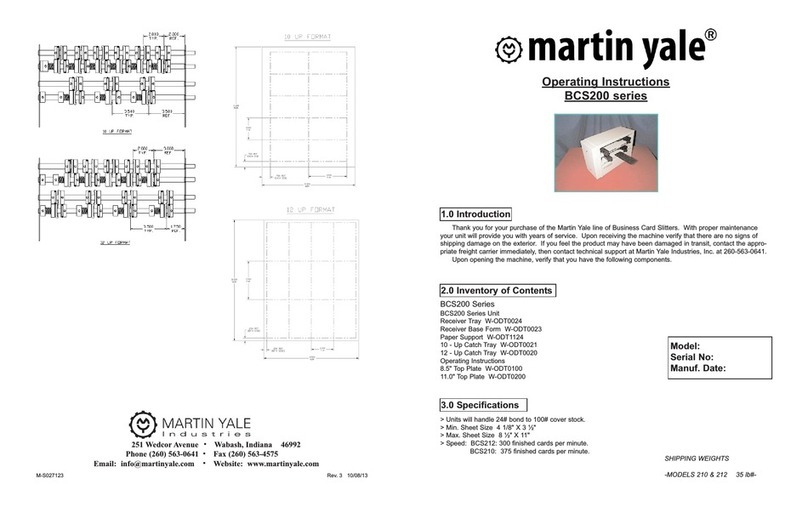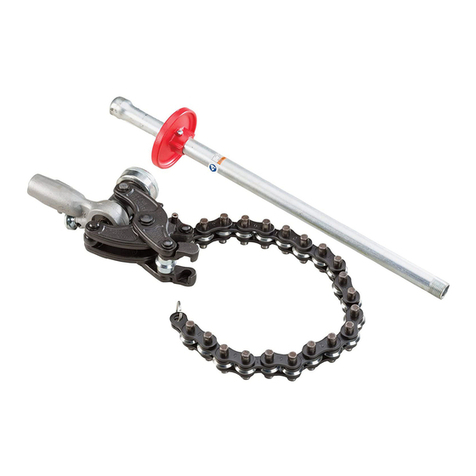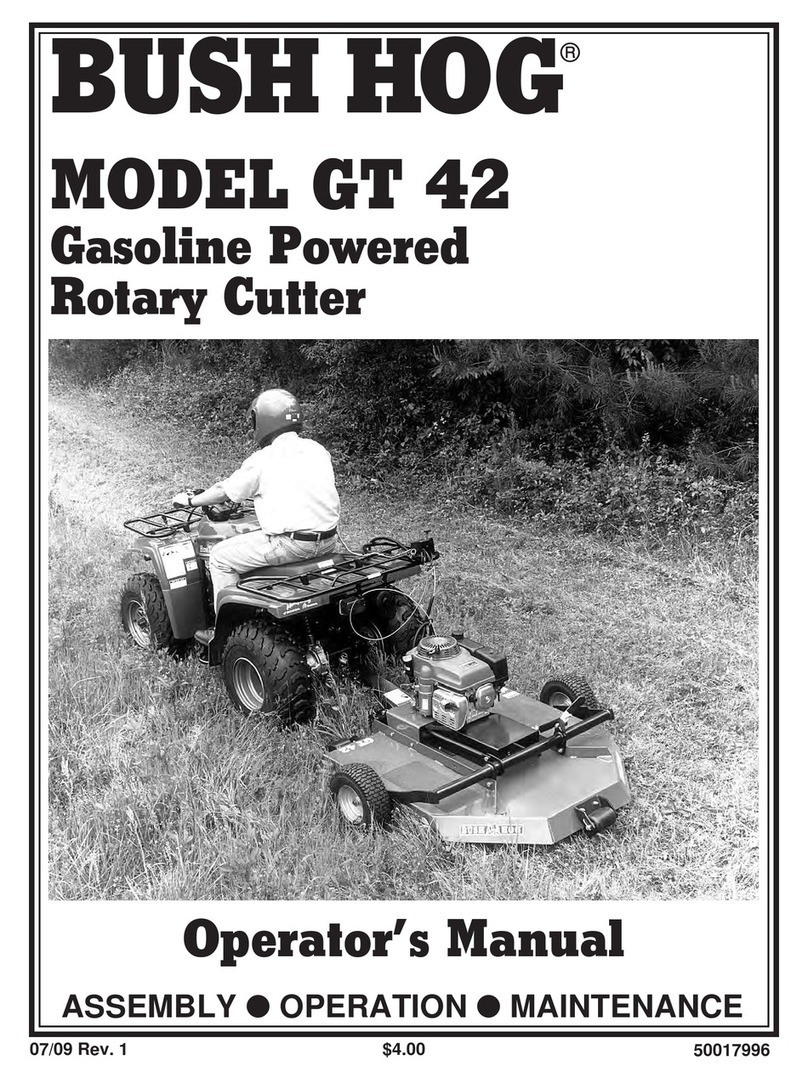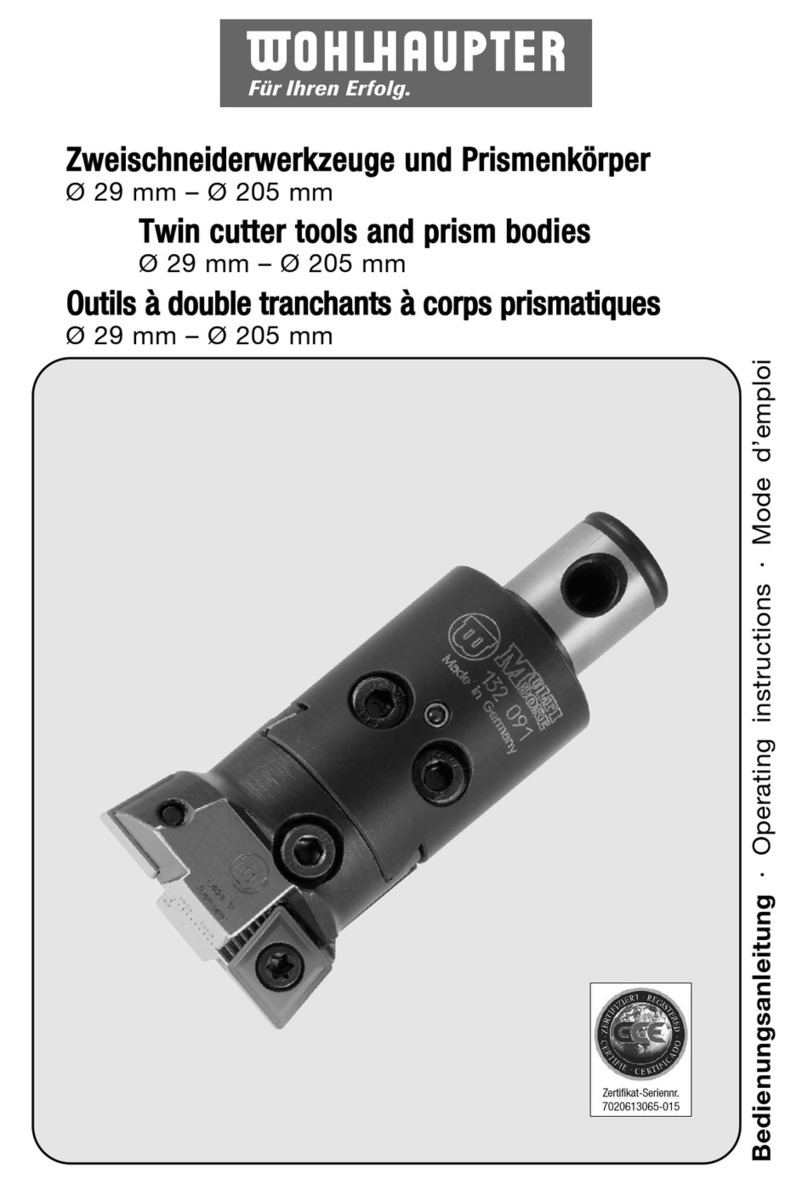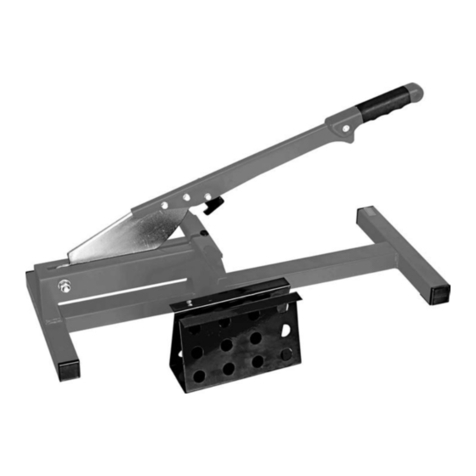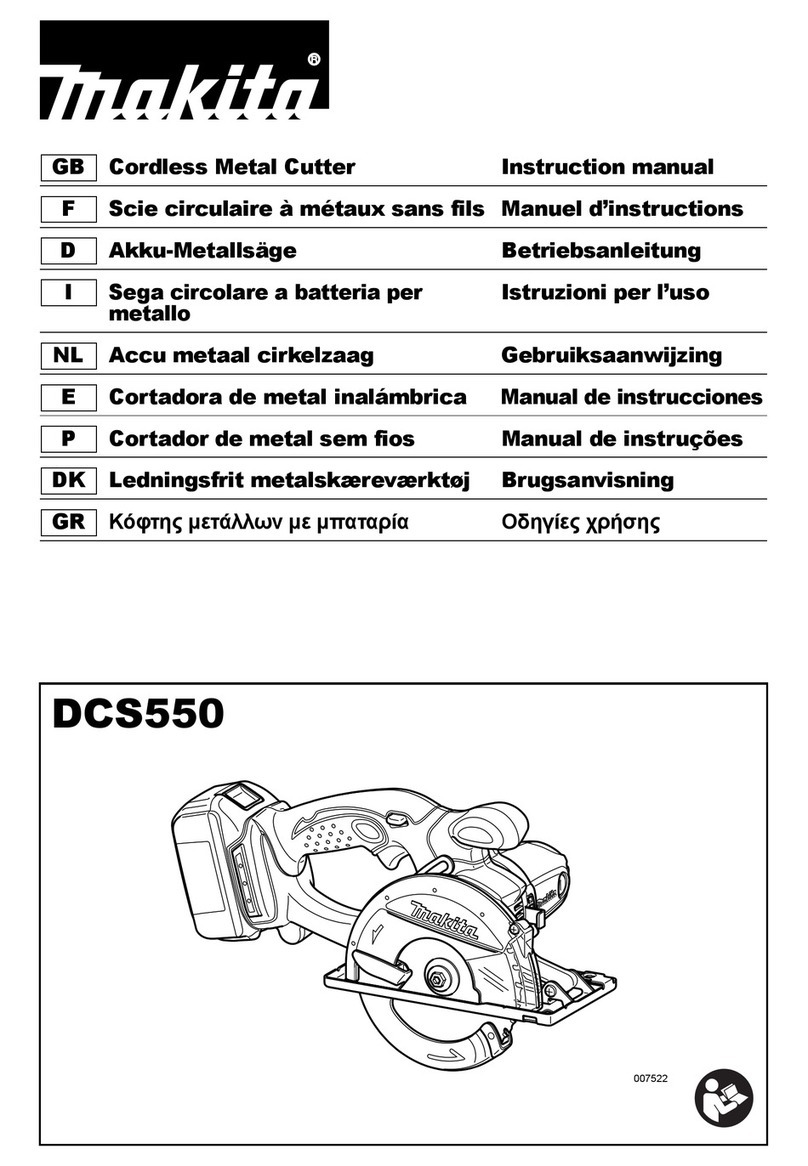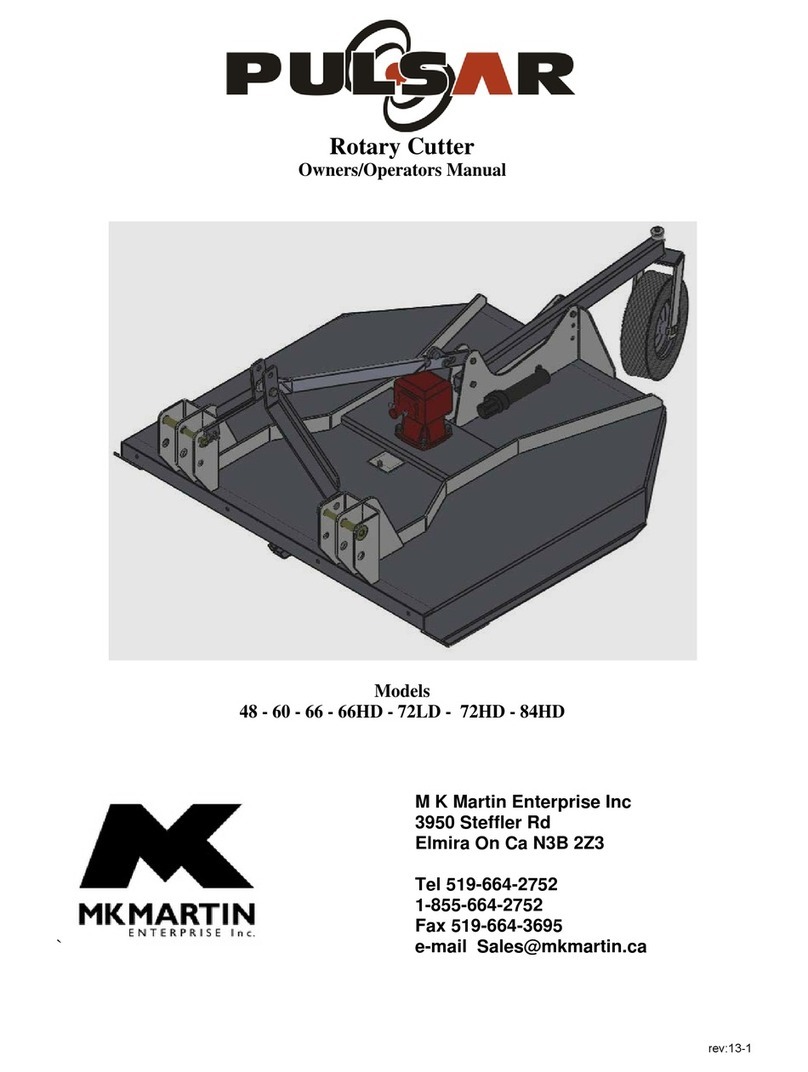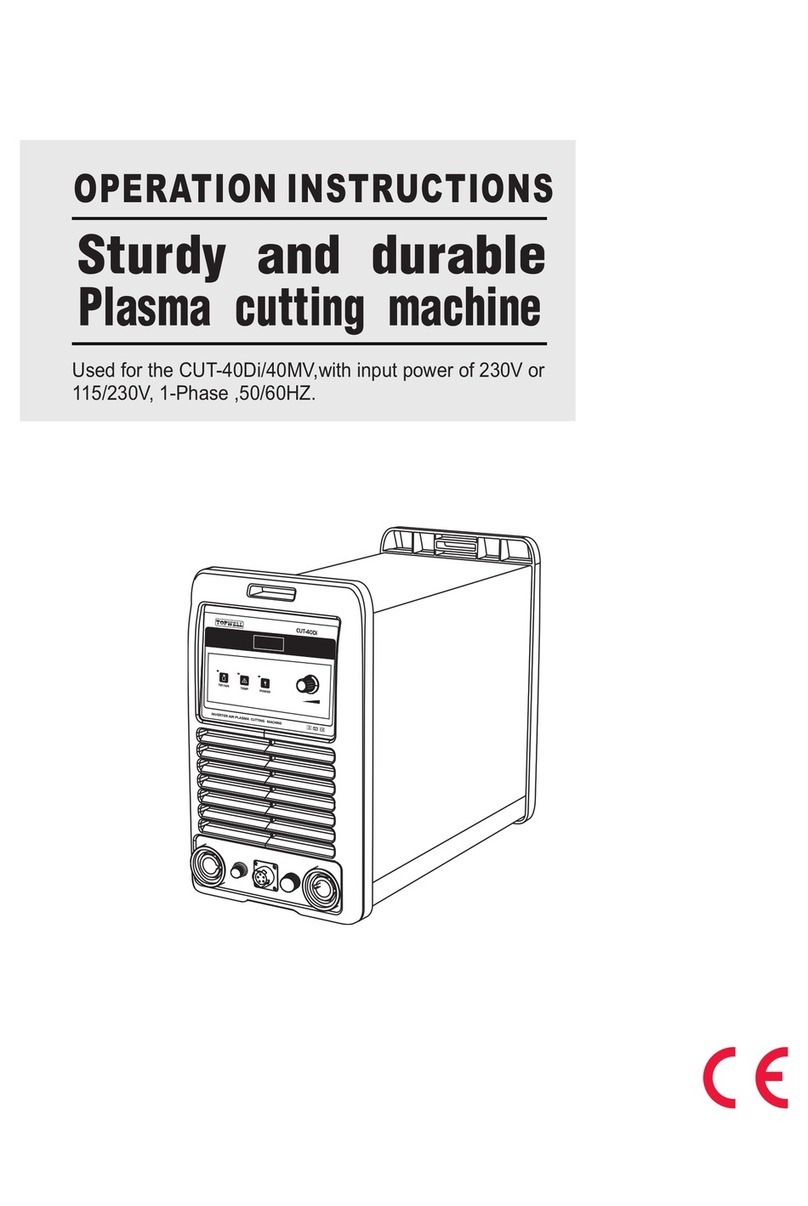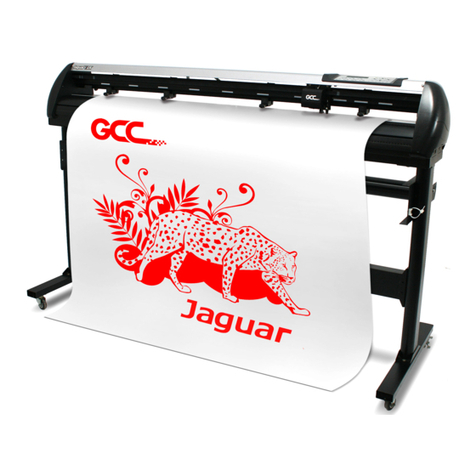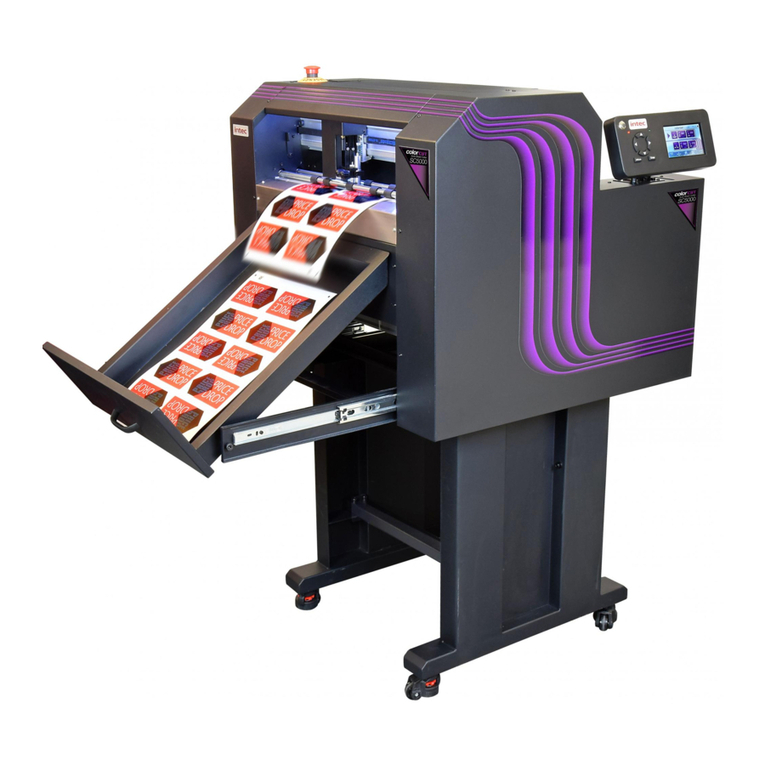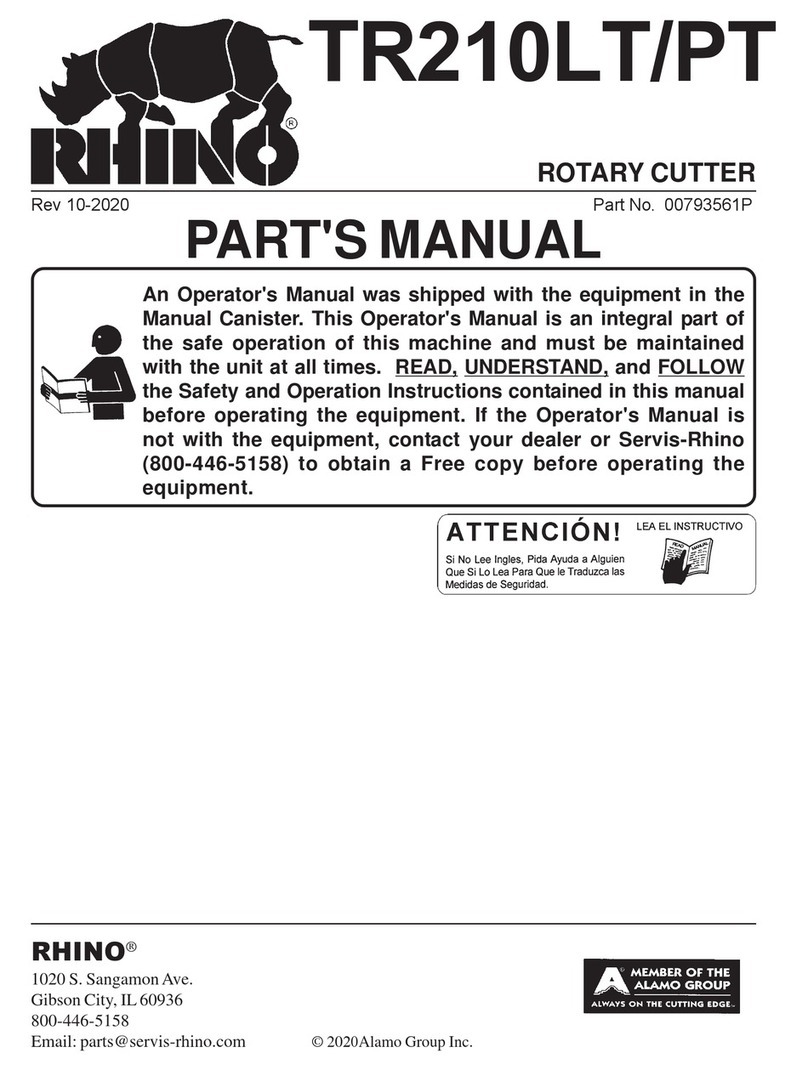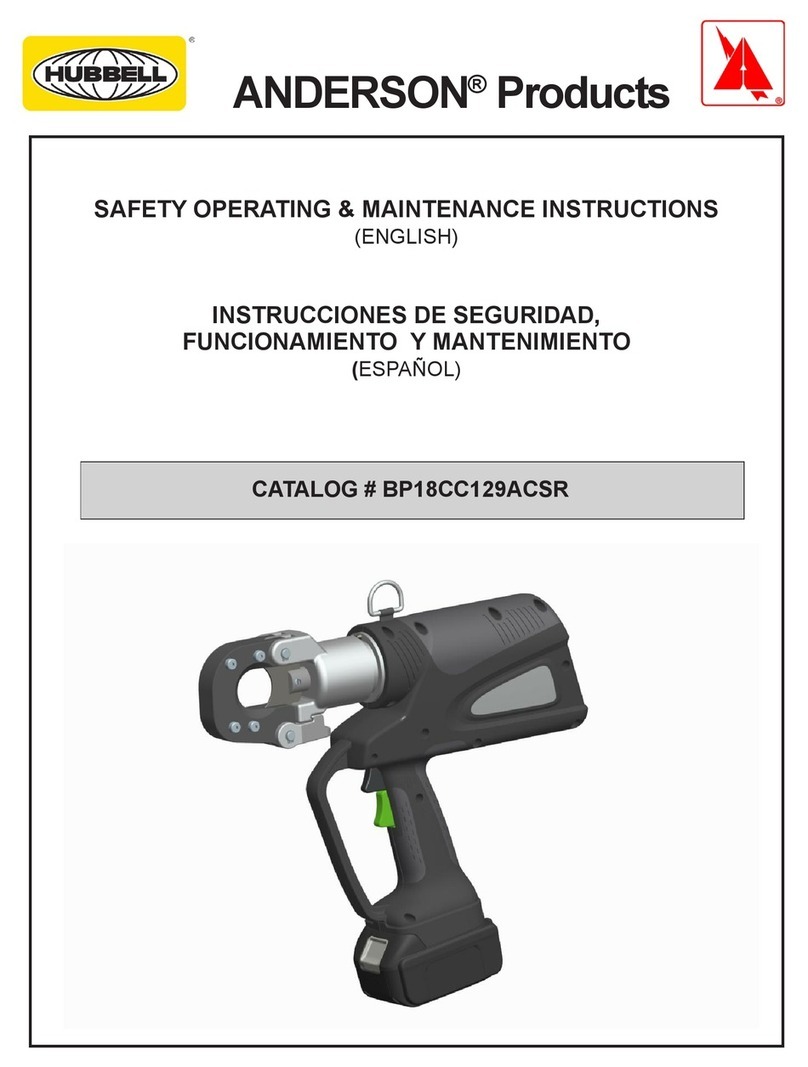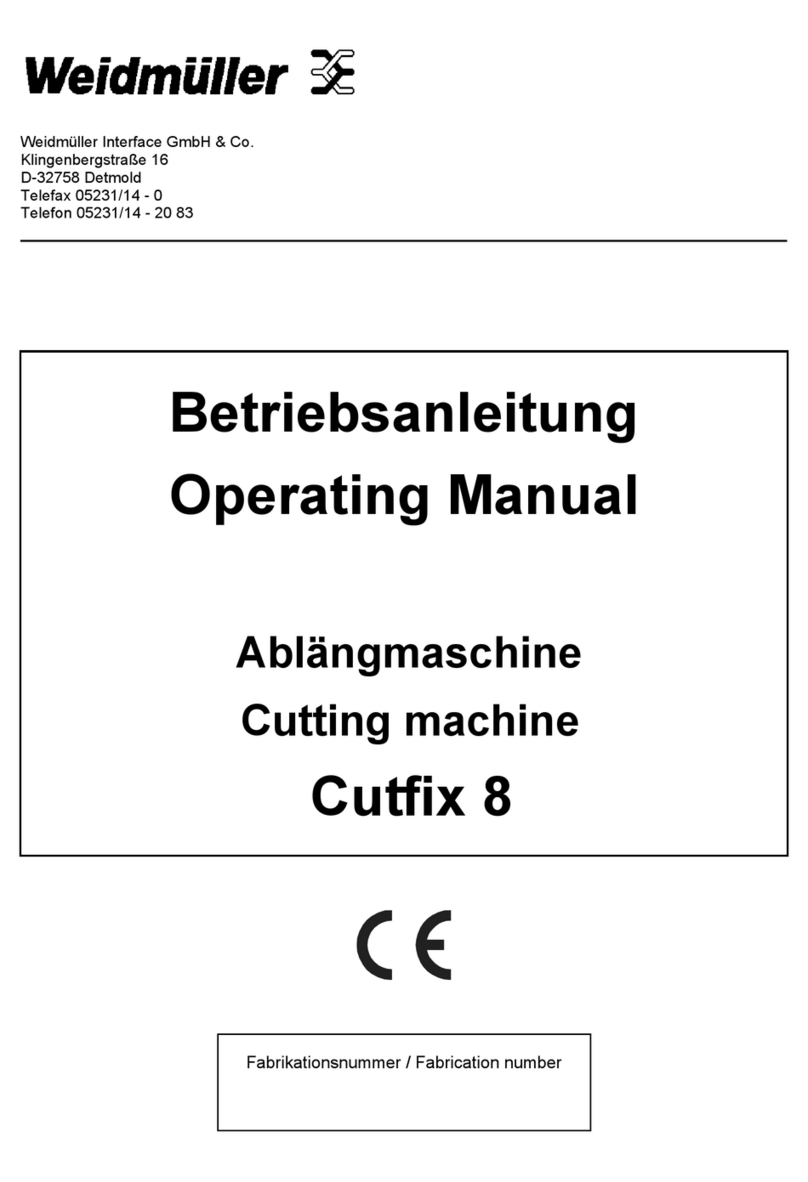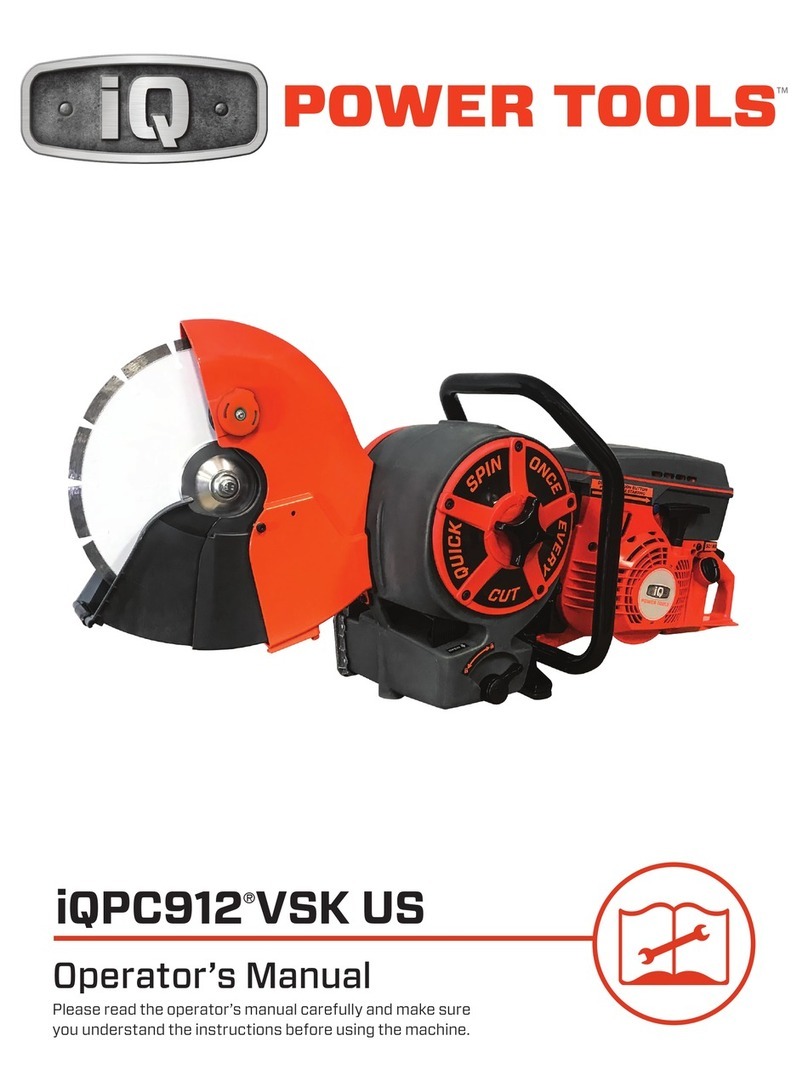Davco SUPACUT User guide

SUPACUT
Oxy-Gasoline/Petrol Cutting System
STARTUP GUIDE
STARTUP:
1. Select the appropriate model cutting torch and cutting nozzle and connect the fuel and oxygen
hoses to the torch, fuel tank and Oxygen cylinder as per manual instructions.
2. Check BOTH Oxygen and Gasoline/petrol/Gasoline valves and controls are in the
CLOSED/OFF position.
3. Fill the explosion proof fuel tank with clean REGULAR grade gasoline/petrol, replace and close
the tank cap and vent valve
4. Now firstly turn on the Oxygen supply and adjust the Regulator pressure to between 10 and
40psi (varies depending on size of tip in use). This pressure may need to be increased when
using larger torches and tips to cut thicker material (Consult full manual).
5. Open the fuel tank cap ¼ to ½ a turn and LEAVE as slightly open position. This is to prevent a
vacuum forming in the fuel tank when the torch is in use.
6. Now while elevating the cutting torch ( 3-6ft or 1.5-1.8m) open the tank fuel
outlet valve AND then open the torch fuel control valve.
7. While the tank AND torch valves are open ALSO open the preheating/Oxygen control valve of
the torch and let the oxygen flow (for 10-15 seconds) or until fuel mist begins to spray from the
torch tip.
8. Once fuel sprays from the torch tip promptly turn off torch fuel valve then the torch oxygen
valve. The oxygen line should now be purged of AIR and the fuel line should now be full of fuel
and “Ready For Use”
(If during initial setup and operation any air bubble is left in the fuel line the torch flame may self extinguish during
operation due to an interruption in fuel flow [by an air bubble]. Simply reignite torch and continue.
9. Check system for any fuel leaks.
10.The torch is now ready to be ignited.
11.To ignite the torch FIRST slowly turn on preheating/oxygen control valve. Yes OXYGEN FIRST
12.SECONDLY turn on Gasoline/petrol control valve and then ignite the oxy/gasoline/petrol mist
with an igniter. Note: If a spark igniter is used ignition can be a little difficult as liquid
gasoline/petrol wont burn ! Gasoline/petrol needs to vaporise to ignite so if your source of
ignition is too close to the nozzle and the gasoline/petrol is still liquid you cant light it… Try a
little further away. (A naked flame can be easier to achieve ignition than spark igniters –BBQ
flame gas lighter is quite good or pocket size mini butane torch or similar flame lighters)
13.Once lit…. for correct operation the cutting nozzle needs to be heated to a minimum of around
120-140F - 50-60℃so the gasoline/petrol instantly vaporises on exiting the tip. To preheat the
tip, adjust the controls for a small flame (increase the fuel flow, reduce the preheating
oxygen) and maintain a small flame for 5-10 seconds. IF the tip is not hot enough OR the
gasoline/petrol flow is too great some fuel may actually drip from the tip (even while the torch is

ignited) Remember LIQUID gasoline/petrol wont burn…only the vapour will. Reduce fuel flow to
allow adequate heating. (A tips full operating temperature is 750-930F - 400-500℃)
14.Once the tip has been preheated further open the oxygen valve to increase the flame cone size
to about 3-5mm (or larger on larger torches and tips) and if the flame appears reddish…. reduce
the Gasoline/petrol flow until the red flame disappears. Now the flame cone should be bright
state. If not ‘bright’, you should slightly open the Gasoline/petrol control valve base until the
flame cone brightness is at maximum brightness but before it turns reddish colour. The flame
should now be long and have stable combustion. (Greater details in manual)
15.To cut…first preheat the start point of the work piece to the steel melting temperature then
depress the torch cutting oxygen valve lever to ignite the steel and begin cutting.
SHUTDOWN:
•After finishing cutting or heating first close the torch gasoline/petrol valve until the flame is
completely extinguished and then close torch oxygen valve and valve on the oxygen cylinder.
•Once finished the system can be left “as is” or in a “Ready For Use”state. (repriming is then
not typically necessary to restart the torch). However IF the torch is not to be used again for
some time it is recommended the operator drain the gasoline/petrol in the fuel hose back to the
tank, turn off the fuel outlet valve, close the filling cap vent and oxygen cylinder valve, remove
the oxygen regulator and cutting torch. Clean all items before storing ready for future use..
SAFETY:
•Use the cutting/heating system with care due to a precision piece of equipment ensuring it is
kept clean and free of any damage. Protect the fuel tank from damage and ensure the
workplace is kept clear and free of potential operating hazards.
•Any high temperature cutting operation using an open flame should ALWAYS be used with
great care paying careful attention to safety issues related to a potentially hazardous working
environment.
•An open flame cutting/heating system MUST only be used in a well ventilated area and NEVER
in close proximity to oxygen cylinders, gasoline/petrol tanks or any flammable material.
(Preferably at least 10 meters away).
•Pay careful attention that the torch, gasoline/petrol hose and oxygen hose are kept clean, free
of grease or oil or grease in order to prevent oil-oxygen reaction, fire or explosion. Ensure hoses
are protected from contact by melting or burning steel, heavy or sharp objects etc .
•Never pull on the Gasoline/petrol hose and oxygen hose. Should there be any signs of cracking,
softening or hardening the hose should be immediately repaired or replaced.
•NEVER heat or damage the Gasoline/petrol tank in any way.
•The Gasoline/petrol supply must be clean regular Gasoline/petrol. (to prevent fuel line or nozzle
blockage).
•The torch cutting nozzle fitting surface should be protected from any damage to prevent a poor
seal possibly causing a leak so affecting safe operation.
•NEVER place a burning torch on the work piece or the ground.
•NEVER block the cutting nozzle with anything so as to avoid oxygen reverse flow into the
Gasoline/petrol supply system, resulting in air resistance or dangerous incidents.

Cutting
nozzle No.
Cutting Oxygen
Aperture (mm)
Oxygen
Pressure
(Mpa)
Cutting
thickness
(mm)
Cutting
Speed
(mm/min)
Oxygen
consumption
(m³/h)
Petrol/Gasoline
consumption
(L/hour)
30-1#
0.7
0.2-0.3
3-10
600-400
0.8-1.0
0.44-0.88
30-2#
0.9
0.3-0.4
10-20
400-300
1.2-1.4
0.55-0.99
30-3#
1.1
0.4-0.5
20-30
300-240
1.6-2.2
0.88-1.21
100-1#
1.0
0.3-0.4
10-25
300-240
1.4-2.2
0.77-1.10
100-2#
1.3
0.4-0.5
30-50
210-170
2.4-4.0
0.99-1.32
100-3#
1.6
0.5-0.6
50-100
180-140
5.0-7.0
1.10-1.76
300-1#
1.8
0.5-0.6
100-150
160-120
8-10
1.54-1.87
300-2#
2.2
0.6-0.7
150-200
130-110
11-14
1.65-1.98
300-3#
2.6
0.8-0.9
200-250
110-90
14-18
1.76-2.20
300-4#
3.0
1.0-1.1
250-300
100-80
18-32
1.87-2.53
(TIPS are marked on their sides)
100 Series torch can use 30-1# thru 100-3# tips (May require adapter nut for 30 series tips)
300 Series torch can use 100-1# thru 300-4# tips (May require adapter nut for 100 series tips)
Table of contents
